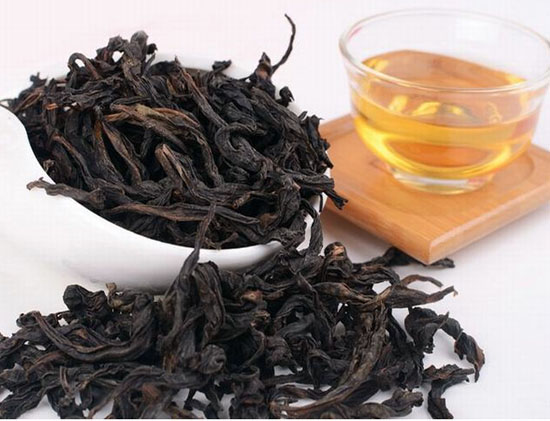Wu Yi Yan Cha or "Rock Wulong" is a special subcategory of Wulong tea grown in the vicinity of Wu Yi Shan City in northern Fujian Province. Wu Yi Shan is a UNSECO World Heritage site, internationally recognized and protected for its biological diversity and significance as an ancient cultural site. A long time center of tea production, farmers in Wu Yi Shan developed the methods for making Wulong tea around 1650. To this day, Wu Yi Shan’s wulong tea, known as "Yan Cha" or "Rock Tea" is considered by many to be the preeminent style of wulong tea. More so than any other famous tea, understanding Wu Yi Yan Cha is inextricable from examining the intricacies of its growing region.
Tea Production in Wu Yi Shan and the Origin of Wu Yi Wulong
Wu Yi Shan has a long history of producing famous tea. Nothern Fujian ascended to fame as the foremost tribute tea producing region big red robeduring the Song Dynasty (960-1279 AD) when the fields and factories of the region were recognized as the producer of the nation’s best quality tea and hosted the epicenter of the government controlled tea industry. During the Song, all tea was essentially green tea that was compressed into cakes during its manufacture. The compressed tea from Wu Yi Shan was so sought after that it was renowned to be worth more than its weight in gold.
The arrival of the Ming Dynasty (1368-1644 AD) forced Wu Yi’s craftsmen to change the way they made tea from the compressed form to the loose-leaf form we recognize today. With much difficulty in adapting to this new standard of production, Wu Yi Shan slowly retooled its infrastructure and began to make loose-leaf green tea, in an attempt to copy the technique from successful tea producers in Anhui. The producers of Wu Yi Shan, being unfamiliar with making pan fired green tea, inadvertently allowed their tea leaves to oxidize. Their imperfect efforts at making loose leaf green tea sired the creation of partially oxidized wulong tea and fully oxidized black tea in Wu Yi Shan at the end of the Ming. Wu Yi Shan continues to produce the world most sought after wulong in the form of its famous Yan Cha.

The Climate and Tea Plant Biology of Wu Yi Shan
Throughout its history spanning dynasties, tea scholars have been attracted to the biologically diverse and unique climate of Wu Yi Shan. Even when the Scottish Spy, Robert Fortune, smuggled the first tea bushes out of China, he traveled to Wu Yi Shan to take his samples.
comparisonIn the last 1000 years, hundreds of varieties of tea bushes have been identified as growing in Wu Yi Shan. Out of these hundreds of bushes, Da Hong Pao, Tie Luo Han, Bai Ji Guan, Shui Jin Gui are considered the Four Famous Wu Yi Wulongs. Of the four, Da Hong Pao is unquestionably the most famous. What are considered to be the mother bushes of Da Hong Pao still live in the cliffs of Wu Yi Shan, and are now over 350 years old. Since Wu Yi Shan has so many bush types, the famous teas are always produced in small quantities. They will never be truly common products, at least the tea grown inside the mountain range; there are a lot of areas in the surrounding mountains that are producing large quantities of these cultivars. Certainly the most common of the rock wulongs is Rou Gui, a cultivar that some locals rank as better than the more famous teas.
Wu Yi Shan’s climate offers a number of unique benefits to growing tea, most notably its mineral soil eroded from the volcanic rock faces. A layer of soft red soil lies about 10-40 cm thick on the ground of Wu Yi’s interior. This is the rich terrior that endows the characteristic flavor of Wu Yi’s tea. In Chinese, this distinctive flavor is expressed as "Yan Yun," lit. "rock rhyme."
The temperature averages 18C though the year, with a short frost time that won’t kill tea plants. Precipitation is abundant and the region is almost always in a shroud of fog. The humid conditions (80% humidity on average) keeps the soil moist and the bushes healthy. Besides the humidity, the cliffs are continually weeping minerals into the soil.
Even though Wu Yi Shan’s elevation averages lower (650M) than other high quality tea growing regions, its ideal temperature, soil andtea color comparisons weather more than compensate. Hundreds of boulders, some the size of a small mountain, are spread throughout the area. There are ninety-nine large rock faces in the center of Wu Yi mountain, the Zheng Yan Cha growing area, alone. The Zheng Yan Cha growing region itself is defined by two rivers encircling the heart of the region. There is a myth that a princess was separated from her lover by a monster, all three represented by towering rocks. The princess and her lover are two tall monoliths, separated by a large plateau. The monster is the plateau, and it has many valleys scarring it. It is within the monster that the best teas grow, on its back and in the narrow, cliff-sided valleys in between.

![Diseases, Symptoms, tcm, [tcmwindow.com]](/uploadFile/adImg/2015/11/11/f5cbfcc0-4df5-4646-9b9a-f316651a0199.jpg)





